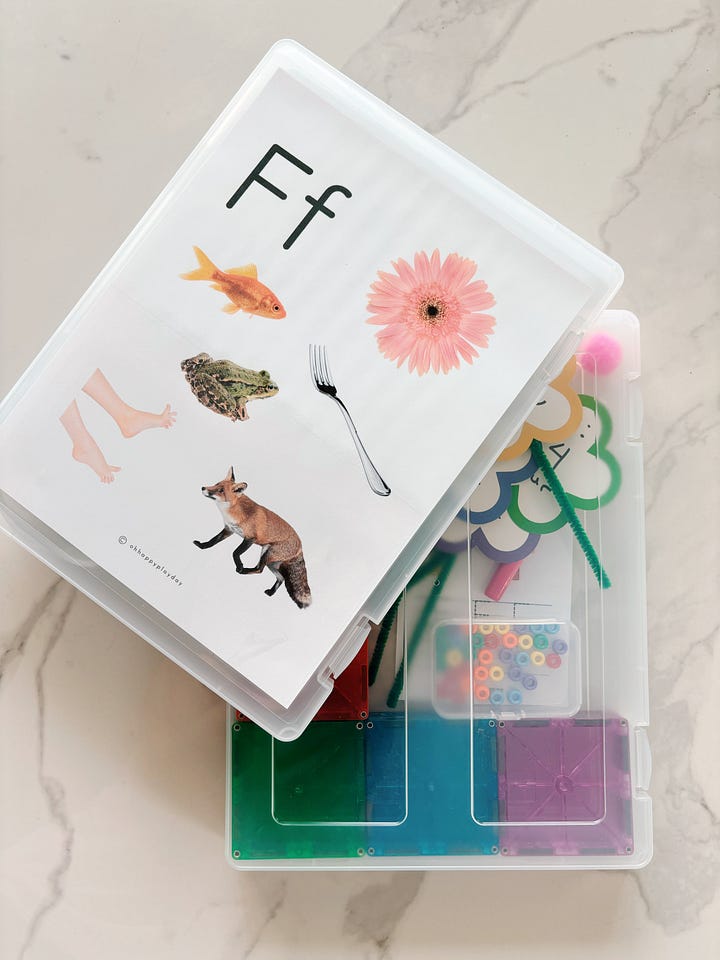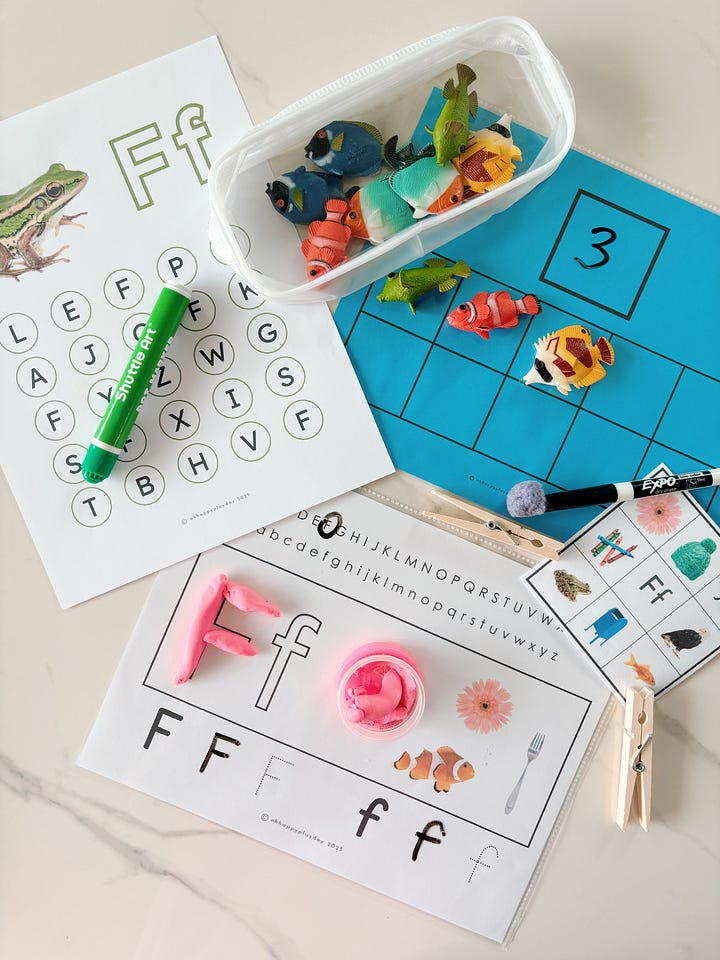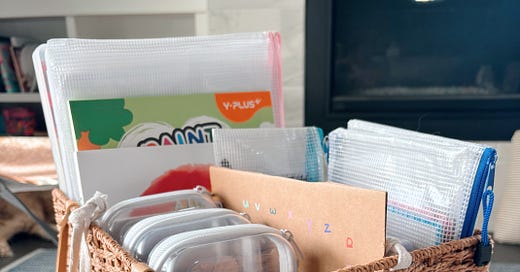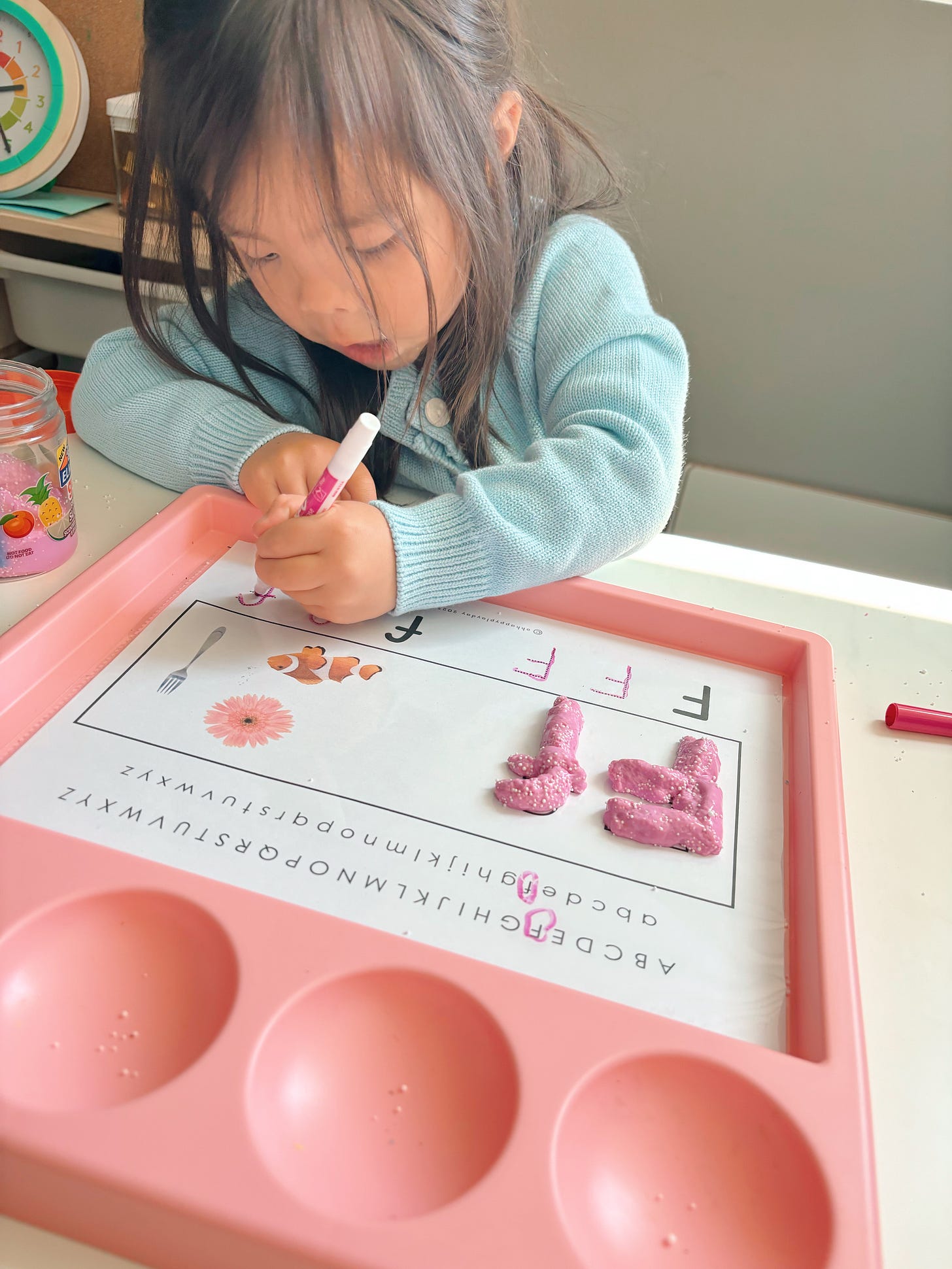Our 4-Year-Old's Learning Basket
How we've incorporated "morning baskets" into our home rhythm, a deep dive into our four-year-old's current basket, and another free printable for paid subscribers!
While we’ve never homeschooled in the traditional sense, an idea I integrated into our daily rhythm inspired by the amazing homeschooling community was the practice of morning baskets. We started when my oldest was two years old and four years later, it’s remains a family tradition that’s still going strong.
Picture this:
A basket filled with curated books, games, crafts, and other learning activities to encourage curiosity, intention, and connection. Conventionally, families gather around breakfast time to explore the contents as a gentle, calm start to the day. It’s not intended to be a curriculum checklist. It’s about fostering a love for learning that doesn’t feel rushed or pressured.
Our experiences with incorporating morning baskets into our home rhythm constantly evolves. At no point have we ever had a true “morning” basket routine. In fact, we don’t actually call it a morning basket at all—just a learning basket. I think this is largely because on most days, I leave early for clinic and like many families, we’re usually scrambling to get everyone out on time. For awhile, my workdays were shorter allowing for a consistent “evening” basket routine between work and dinner which was a lovely way to reset and connect. For the last couple of years though, this has not been realistic yet we’ve managed to hold tight to this family tradition in a way that works in this season of life.
Our flow now
I put together a basket for each of our kids and rotate new items in roughly every 1-2 months.
Their baskets are kept accessible in our living room which is where our family naturally gathers the most.
I leave when and how often the baskets are accessed up to our kids which typically ends up being two to three times a week, sometimes in the morning, but often at other times of the day—whenever it feels right.
While most activities are intentionally set up to be done independently, we’ve continued to think of learning basket time as a family gathering time so I’m always present for company and support whenever their baskets are out.
Contents vary considerably, but I try to keep it balanced. Our basket backbone looks like this:
Math activities
Language activities
STEM or brain gym
Practical life, social-emotional development, or cultural studies
Sensory exploration
Arts and crafts
And, gross motor play
Today, we’re going to do a deep dive of what’s in my 4-year-old’s learning basket this month.
If you’re not already a subscriber, please consider joining to receive weekly emails and to show your support! Become a paid subscriber to read partially paywalled posts like this one and receive FULL access to all archived content.
Language and Math
We’re working on solidifying beginning sounds and letter formation, writing letters more consistently, and starting CVC words (not included here). This basket, I gathered letter F activities (I rarely pick a letter theme but just happened to this time!). Most of the printables here are from my website.


We’re practicing:
Phonetics: We’ve hung up these alphabet posters on the wall as decor, but usually include them in hands-on activities to review letter sounds. They contain real photos which is especially helpful during early childhood as it builds an accurate understanding of the world around them. The clothespin sound mats are more challenging as they require her to identify which words start with the letter in the center.
Letter recognition: Kids really need to be able to recognize letters and connect them to the sounds they make before learning how to write that letter (or even what that letter is). This may seem obvious to some, but I see many parents jump right into rote tracing before kids are ready. The ability to visually discriminate one letter from another is a hard skill that takes LOTS of practice. These Dot the Letter pages have been helpful for this. BTW, dot markers are life over here! I’ve tried them all and really like this brand—they have durable tips and vibrant colors, but what really sets them apart from competitors is a much slimmer profile that makes it easier for littles to gracefully hold.
Letter formation: Before writing or tracing letters comes a plethora of pre-writing activities to develop hand strength and dexterity. Letter formation using materials like playdough or beans is one of my favorites! I’m a big believer in tactile, hands-on learning during early childhood, and I do think that can be done through “worksheets.” One of our most used printables at home has been these alphabet mats which gives her a space to find, sound, form, and trace each letter.
F for fish—in the same document organizer, I printed a ten frame onto blue cardstock and set out fishies for counting. Here’s that FREE ten frame printable for you.
Keep reading with a 7-day free trial
Subscribe to Ohhappyplayday's Substack to keep reading this post and get 7 days of free access to the full post archives.







